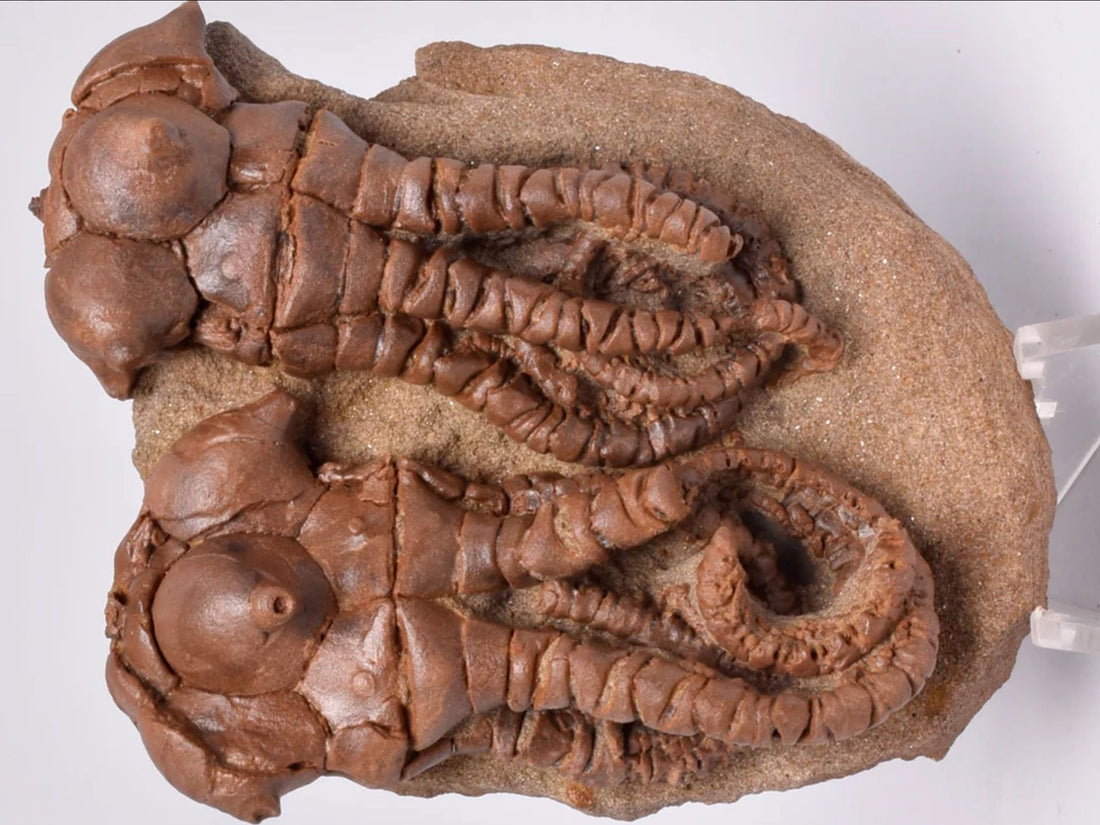
Unearthing the Past: The Crinoid Fossil Jimbacrinus bostocki in Western Australia
Share
Western Australia is a treasure trove of geological wonders, and among its most fascinating finds are the crinoid fossils of Jimbacrinus bostocki. These ancient marine organisms, often referred to as “sea lilies,” provide a captivating glimpse into the marine ecosystems of the Permian period, approximately 280 million years ago.
The fossils of Jimbacrinus bostocki were first discovered in 1949 by the manager of Jimba Jimba cattle station, Mr. J. Bostock, after whom the species is named. These fossils were unearthed in the Cundlego Formation, a sandstone formation created by flooding and storm event deposition during the Early Permian period. The region now known as Gascoyne Junction was once submerged under a vast, shallow sea, providing ideal conditions for the growth and preservation of crinoids.
Shop Jimbacrinus Bostocki Here
Morphology and Anatomy
Jimbacrinus bostocki exhibits a fascinating morphology that is both intricate and indicative of its lifestyle. Like other crinoids, it possessed a stalk, or stem, that anchored it to the sea floor, and a crown composed of feathery arms that extended into the water column. These arms were equipped with tiny tube feet that trapped plankton and other small particles from the water, funneling them towards the mouth located at the center of the crown. The robustness of their stalks suggests they inhabited environments with moderate to strong currents.
Evolutionary and Ecological Insights
The fossils of Jimbacrinus bostocki offer invaluable insights into the evolution and ecology of the Permian seas. Crinoids, as echinoderms related to starfish and sea urchins, have a long evolutionary history, and their well-preserved fossils help paleontologists understand the diversity and adaptation of marine life during the Permian period. The detailed structure of the Jimbacrinus fossils, including the calyx (the cup-shaped central body) and pinnules (small appendages on the arms), provides insights into their mode of life and the environmental conditions they thrived in.
The exceptional preservation of Jimbacrinus bostocki fossils is attributed to the specific conditions of sedimentation and mineralisation processes over millions of years. These fossils not only fascinate paleontologists but also offer significant insights into the evolutionary history of marine organisms. The discovery of these fossils has been pivotal in understanding the Permian period, a time when marine ecosystems were thriving and diversifying.
Conclusion
The crinoid fossils of Jimbacrinus bostocki from Western Australia are a remarkable window into the ancient marine world. Their intricate structures and well-preserved state provide a wealth of information about the marine ecosystems of the Permian period and the evolutionary history of crinoids. These fossils continue to be a subject of fascination and study, shedding light on the rich geological history of Western Australia.
Shop Jimbacrinus Bostocki Here
References
- The Archaeologist: thearchaeologist.org
- Earthly Mission: earthlymission.com
